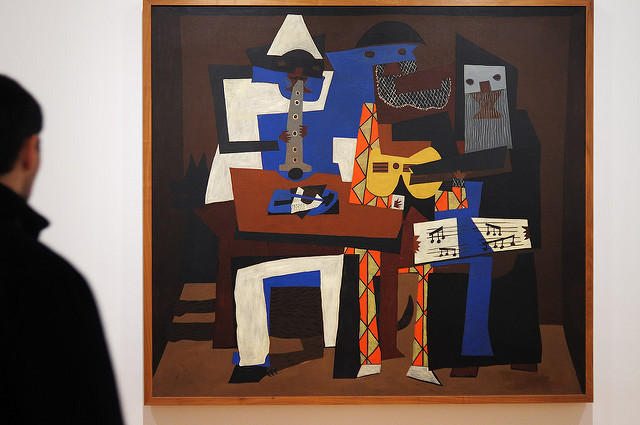Cubism is a significant art movement from the early 20th century that originated in France. Pioneered by artists like Pablo Picasso and Georges Braque, the movement is characterized by objects appearing to be made from cubes and other geometric shapes. Cubism aimed to display all possible viewpoints of a subject at once by breaking it up, analyzing it, and reassembling it in an abstract form. The style used a simplified color palette and forms.
Key Takeaways
- Analytical cubism is the early phase of cubism, developed between 1908 and 1912, and involves breaking down natural forms into geometric shapes with altered viewpoints and spatial cues. It uses a neutral color palette with many earthy tones, creating a flattened, one-dimensional aspect.
- Synthetic cubism is a later movement in cubism, lasting from 1912 to 1915, characterized by simple shapes, bright colors, and little to no depth. This style uses bold colors and combines various materials like newspapers, sand, and sawdust to add texture and pattern to the artwork.
- Both analytical and synthetic cubism are phases in the cubism movement, with Picasso and Braque being the main figures in both movements. The difference between the two lies in their use of color, patterns, and techniques.
What is Cubism?
Cubism is an important art movement in the early 20th century. This movement began in France in 1907 and thrived in the next two decades. Pablo Picasso and Georges Braque are considered to be the pioneers of cubism. The items in cubism artwork look like they are made out from cubes and other geometrical shapes.
Furthermore, this art style aimed to show all the possible viewpoints of a person or an object all at once. Thus, the subject matter of a painting is broken up, analyzed, and reassembled in an abstract form. Cubism also used a simple color palette in addition to simplified forms.
What is Analytical Cubism?
Analytical cubism is the earliest form of cubism, developed between 1908 and 1912. This style attempted to depict natural forms in geometric shapes like cubes, spheres, and cylinders with altered viewpoints and spatial cues. The color palate in analytical cubism was neutral with many earthy tones; this lack of color flattened the image and gave it a one-dimensional aspect. This style refers to real objects through identifiable details; through repetitive usage, these details also become signs and clues that indicate the identity of the object.
Figure 01: Violin and Pitcher by Georges Braque (1910)
For example, in the above painting, “Violin and Pitcher by Georges Braque (1910)”, we see identify specific parts of a violin. These parts represent the whole instrument as seen from different points of views.
What is Synthetic Cubism?
Synthetic cubism is a later movement in cubism, which actually grew out of analytical cubism. This movement lasted from 1912 to 1915. This style includes characteristics like simple shapes, bright colors, and little to no depth.
The most significant change in synthetic cubism is their color palatte; unlike analytical cubism, this style used bold colors like bright reds, greens, blues, and yellows, giving the paintings a greater emphasis. Moreover, this style combined a large variety of extraneous materials such as newspapers, sand, sawdust and music scores in order to add texture and pattern to art. In other words, the artists built up the image from new elements and shapes. Thus, collage, which included using signs and fragments of real things, was a main technique in synthetic cubism. The main idea behind this movement is that introducing physical elements of real life would make the paintings more ‘real’.
Figure 02: Three Musicians by Picasso
What are the Similarities Between Analytical and Synthetic Cubism?
- Analytical and synthetic cubism are phases in cubism.
- Pablo Picasso and Georges Braque were the main figures in both these movements.
What is the Difference Between Analytical and Synthetic Cubism?
Summary – Analytical vs Synthetic Cubism
Both analytical and synthetic cubism are two phases in cubism. Analytical cubism was the early phase of cubism while the synthetic cubism is the later phase. The difference between analytical and synthetic cubism depends on their use of color, patterns, and techniques.
